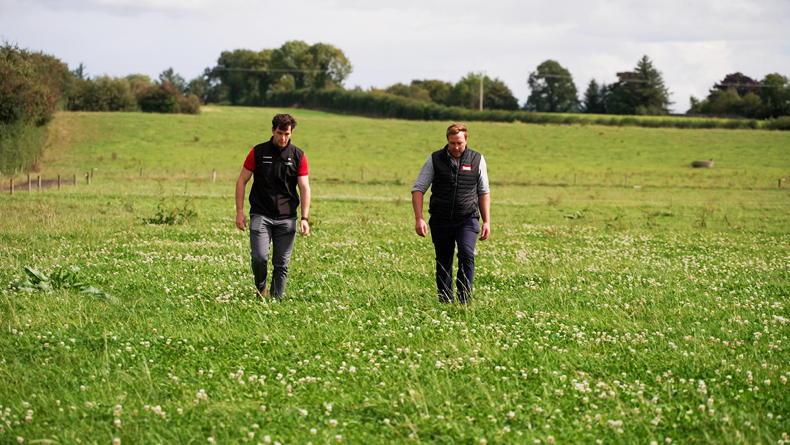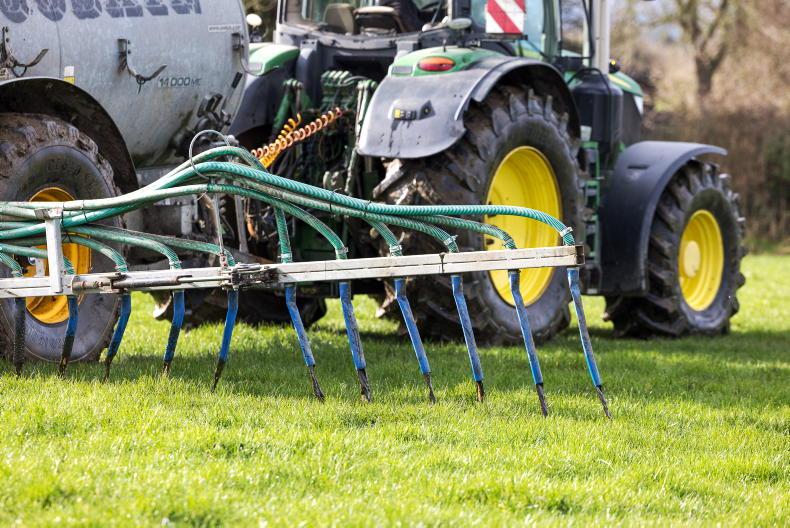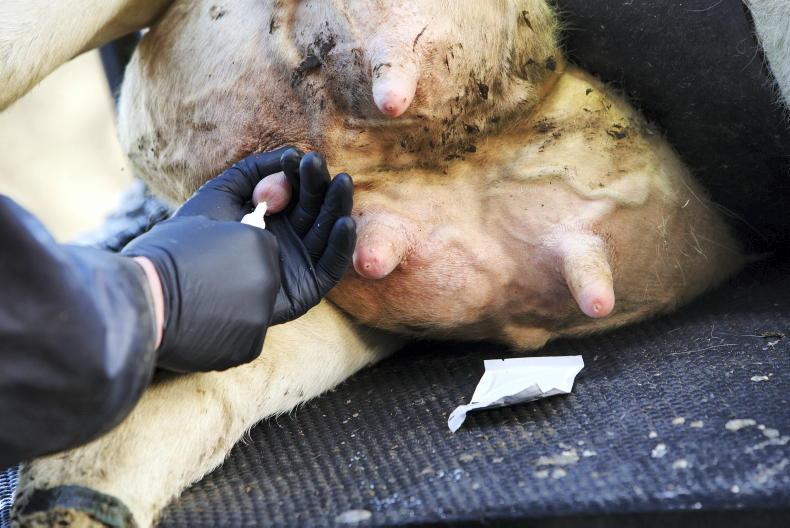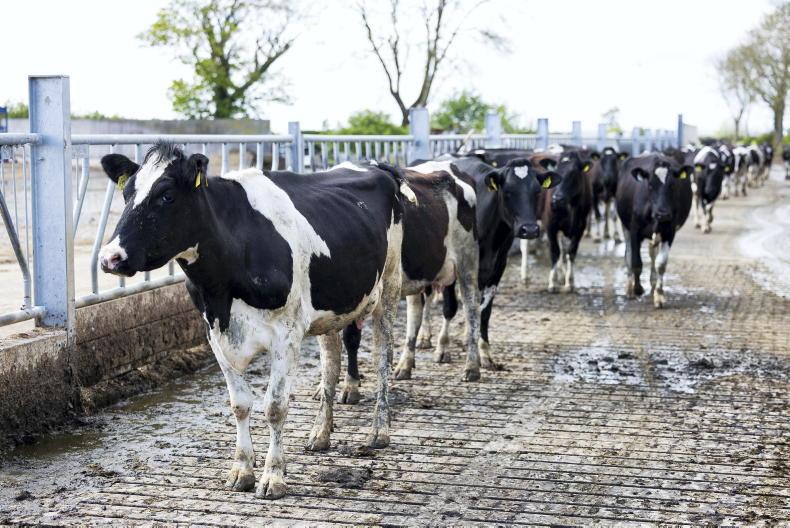A word of advice for anyone entering into a heifer-rearing arrangement between two parties:
The most important bit of the agreement is not physical parameters, price per day, or any of the stipulated parts of the contract.
No, of far greater significance is some level of trust and flexibility within the system, and a willingness to adapt to whatever the dairy farm requires. (Perhaps I should add that a lack of profitability from finishing beef cattle may also be a contributing factor in my readiness to see the other guy’s point of view.)
On a practical level, this flexibility in the arrangement may involve cattle leaving my farm sooner than anticipated, later than expected, or perhaps a bigger than projected fluctuation in numbers.
I mention this situation because, after a relatively uneventful four years, we had a couple of unforeseen events during the past year. The knock-on effect of these incidents tends to necessitate potentially awkward conversations along the lines of, ‘What do we do now?’ sort of thing.
It reminds me of a line that my Uncle used, when he opined that: ‘everyone was very pleasant when they were standing with a glass of whiskey in their hand; it was how they reacted when two hundred sheep appeared in their garden that really mattered’.
New arrivals
This year’s influx of new calves arrived in the middle of May, and about three weeks later one of them dropped dead for no reason.
When I say no reason, that may not be strictly accurate, but after consulting with a few farming friends, we all agreed that ‘these things happen’. Had I phoned my vet, I suspect his opinion may have been different.
When another (perfectly healthy) animal died suddenly in the second half of July, alarm bells began to ring, and I sought professional advice. The vet immediately said ‘Blackleg’, and recommended Bravoxin, along with long acting antibiotic to assist with prevention until the booster shot had time to work.
Thankfully, no more deaths have occurred, but it looks as if I’ll be vaccinating the new arrivals every year from now on.
I remember having to jag bought-in suckled calves many years ago, but I understood they were carrying the bacteria before they arrived with me. I don’t know why this problem hasn’t occurred in the past few years, and if Blackleg is carried in the soil, why hasn’t it reared its head before now?
Reactors
Another potential problem that we had discussed at the outset of this rearing agreement was the issue of a TB reactor. I haven’t had a breakdown (or even an inconclusive animal) for as long as I can remember, but just as complacency was beginning to set in, we had the dreaded bottom lump.
This occurred in one animal among the older heifers, and the challenge here is how to deal with the risk of not getting clear again before they are due to calve.
This had been discussed (by the owners) with the Divisional Veterinary Office (DVO) at the outset of our dealings, and it was agreed that since I had no means (and even less inclination) to milk dairy cows, they would have to move back to the dairy unit on animal welfare grounds. Therefore, we got the chance to put this theory to the test.
The proposed solution was for the whole batch (37) of in-calf heifers to move out of my herd immediately, so they could complete sixty days on the home farm before their next test was due.
That test is now imminent, so it’s a case of keeping our fingers crossed, and presumably the outcome will pretty much determine what does or does not happen regarding subsequent testing?
Obviously, the downside for me was that 37 animals left here about two months earlier than expected, and the subsequent drop in rearing fees will be significant.
However, with silage amounts being tight, allied to the continuous wet weather during October, perhaps I should view this as some sort of blessing in disguise.
After four relatively trouble-free years, I am hoping that the status quo will be restored again in 2021, but in these strange times, I guess I’ll have to be prepared for anything.
Read more
Watch: Farmer Writes - questions around the conacre conundrum
Farmer Writes: highs and lows of 2020 lamb growth
Watch: Farmer Writes – still coming to terms with dairy heifers
A word of advice for anyone entering into a heifer-rearing arrangement between two parties:
The most important bit of the agreement is not physical parameters, price per day, or any of the stipulated parts of the contract.
No, of far greater significance is some level of trust and flexibility within the system, and a willingness to adapt to whatever the dairy farm requires. (Perhaps I should add that a lack of profitability from finishing beef cattle may also be a contributing factor in my readiness to see the other guy’s point of view.)
On a practical level, this flexibility in the arrangement may involve cattle leaving my farm sooner than anticipated, later than expected, or perhaps a bigger than projected fluctuation in numbers.
I mention this situation because, after a relatively uneventful four years, we had a couple of unforeseen events during the past year. The knock-on effect of these incidents tends to necessitate potentially awkward conversations along the lines of, ‘What do we do now?’ sort of thing.
It reminds me of a line that my Uncle used, when he opined that: ‘everyone was very pleasant when they were standing with a glass of whiskey in their hand; it was how they reacted when two hundred sheep appeared in their garden that really mattered’.
New arrivals
This year’s influx of new calves arrived in the middle of May, and about three weeks later one of them dropped dead for no reason.
When I say no reason, that may not be strictly accurate, but after consulting with a few farming friends, we all agreed that ‘these things happen’. Had I phoned my vet, I suspect his opinion may have been different.
When another (perfectly healthy) animal died suddenly in the second half of July, alarm bells began to ring, and I sought professional advice. The vet immediately said ‘Blackleg’, and recommended Bravoxin, along with long acting antibiotic to assist with prevention until the booster shot had time to work.
Thankfully, no more deaths have occurred, but it looks as if I’ll be vaccinating the new arrivals every year from now on.
I remember having to jag bought-in suckled calves many years ago, but I understood they were carrying the bacteria before they arrived with me. I don’t know why this problem hasn’t occurred in the past few years, and if Blackleg is carried in the soil, why hasn’t it reared its head before now?
Reactors
Another potential problem that we had discussed at the outset of this rearing agreement was the issue of a TB reactor. I haven’t had a breakdown (or even an inconclusive animal) for as long as I can remember, but just as complacency was beginning to set in, we had the dreaded bottom lump.
This occurred in one animal among the older heifers, and the challenge here is how to deal with the risk of not getting clear again before they are due to calve.
This had been discussed (by the owners) with the Divisional Veterinary Office (DVO) at the outset of our dealings, and it was agreed that since I had no means (and even less inclination) to milk dairy cows, they would have to move back to the dairy unit on animal welfare grounds. Therefore, we got the chance to put this theory to the test.
The proposed solution was for the whole batch (37) of in-calf heifers to move out of my herd immediately, so they could complete sixty days on the home farm before their next test was due.
That test is now imminent, so it’s a case of keeping our fingers crossed, and presumably the outcome will pretty much determine what does or does not happen regarding subsequent testing?
Obviously, the downside for me was that 37 animals left here about two months earlier than expected, and the subsequent drop in rearing fees will be significant.
However, with silage amounts being tight, allied to the continuous wet weather during October, perhaps I should view this as some sort of blessing in disguise.
After four relatively trouble-free years, I am hoping that the status quo will be restored again in 2021, but in these strange times, I guess I’ll have to be prepared for anything.
Read more
Watch: Farmer Writes - questions around the conacre conundrum
Farmer Writes: highs and lows of 2020 lamb growth
Watch: Farmer Writes – still coming to terms with dairy heifers









SHARING OPTIONS